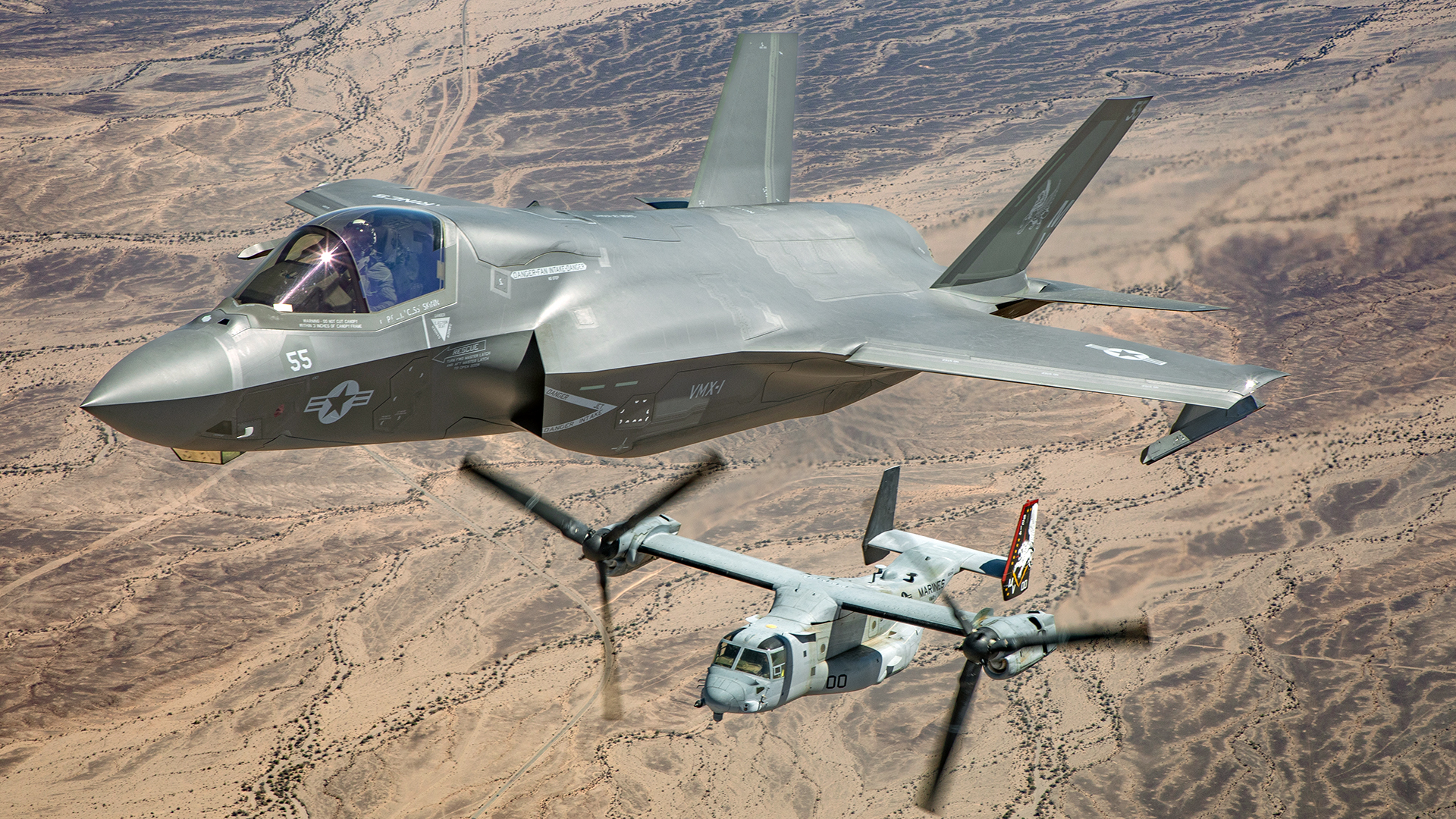Although Marine Aviation officially started in 1912 when Marine First Lieutenant Alfred Cunningham reported to an aviation camp in Annapolis, Maryland, it took over a century for the United States Marine Corps to officially get its own dedicated operational test squadron after decades of conducting testing in Navy-led test squadrons. That unit is Marine Operational Test and Evaluation Squadron One (VMX-1).
Today, VMX-1 is hitting its stride with multiple aircraft types in its inventory and a big increase in manpower. The unit’s goal is to conduct tests and evaluations of all types of Marine aircraft and associated systems, while assisting in the creation of tactics, techniques, and procedures (TTPs) through experimentation to help win any future fight.
Author’s note: This is the first in a multi-part series covering VMX-1’s highly unique mission, diverse stable of aircraft, and the critical role it is playing to shape the future of Marine Corps aviation.
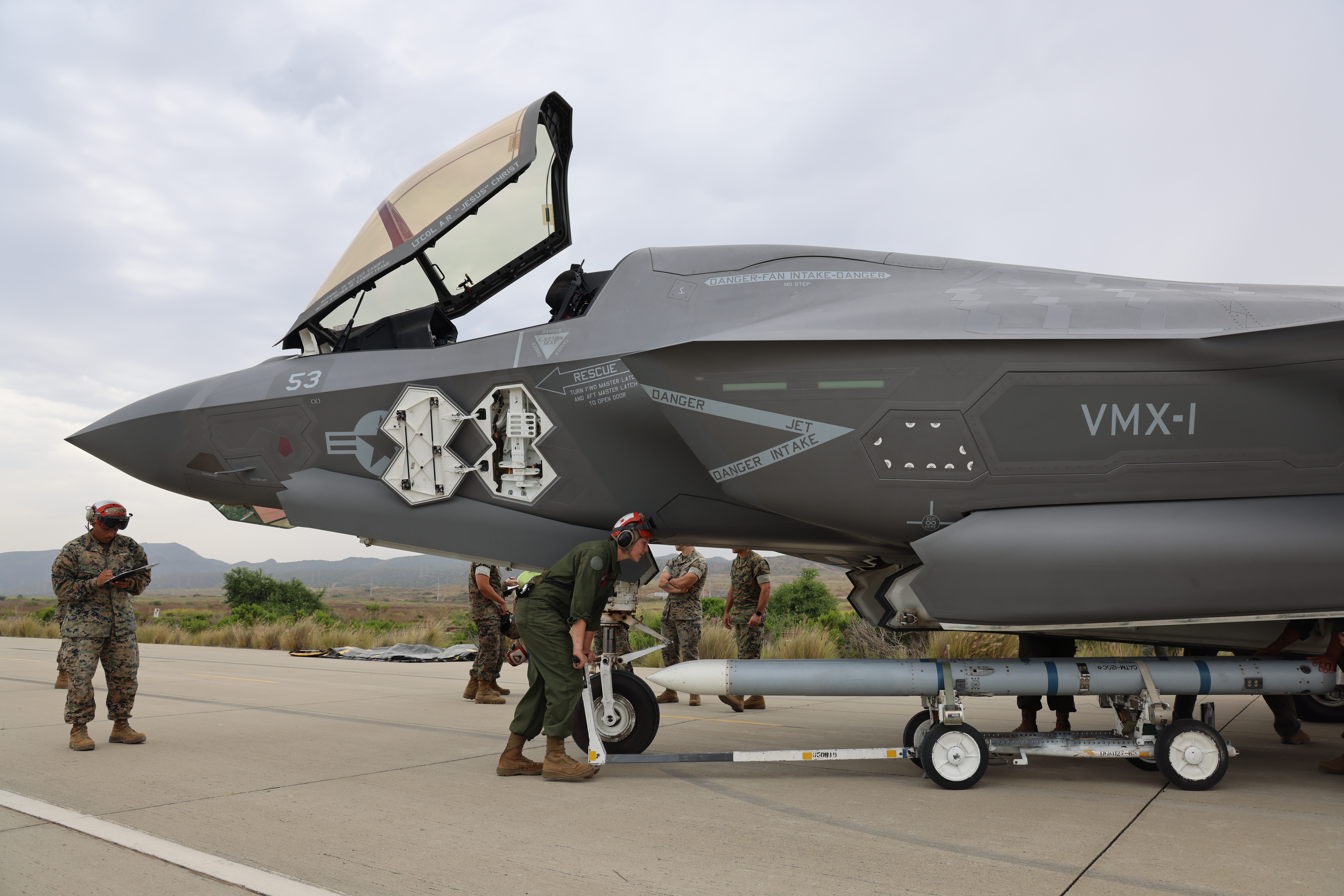
Unlike Developmental Test and Evaluation (DT&E), where systems and aircraft are being tested for the first time, operational testing has a heavy focus on the effectiveness, suitability, and survivability of systems in realistic combat conditions. It is the last hurdle before a weapon system is ready for combat — so the job of the Marines at VMX-1 is to identify any issues before a system is fielded and deployed into combat.
Marine squadron patches often tell a story but none like the one worn by the members of VMX-1. The former commanding officer of VMX-1, Col. Byron ‘Shrek’ Sullivan, explained to The War Zone:
“The history of VMX-1, when you look at where we come from, it is all on our patch. We started with VX-4 way back in the day. There was no VMX-1 because operational tests were normally conducted with the Navy, because most of our aircraft at the time were all part of Navy programs except for maybe the AH-1 and UH-1, so we shared operational testing. We then moved to VX-5 before going over to VX-9. In the early 2000s, the Marines were the first to test the new V-22 Osprey and that’s when we established VMX-22 at Marine Corp Air Station New River in North Carolina. Our patch has nine stars on it. In the upper right-hand corner of our patch, we have four stars separated into two to represent VMX-22 and VX-4. On the left side you have five stars representing VX-5 and when combining the four and five stars, you have nine to represent VX-9.”
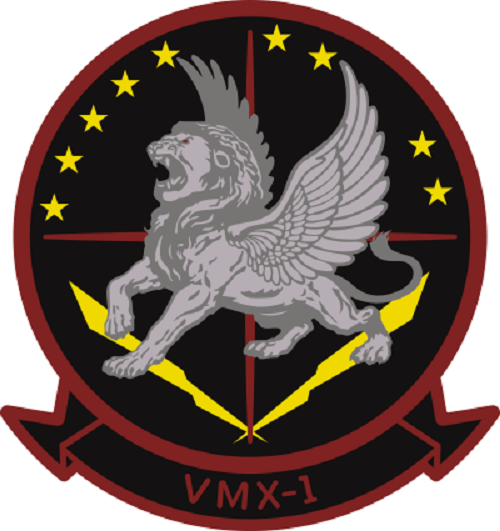
VMX-1 was established in 2016 when the Marines took their MV-22s from Marine Corp Air Station (MCAS) New River to MCAS Yuma, Arizona, along with the AH-1s and UH-1s that were operating from Naval Air Weapons Station China Lake with VX-9. It was also at this time that the Science and Technology (S&T) Department was established. It conducts tactical demonstrations to explore and expand existing capabilities. Three years later the squadron’s F-35B detachment also moved from Edwards Air Force Base to Yuma. The mindset behind this was to take the Marine’s Operational Test and Evaluation Squadron and have it right next door to the Marine Aviation Weapons and Tactics Squadron One, known as MAWTS-1.
Besides providing standardized advanced tactics training and certification of unit instructor qualifications in order to support Marine Aviation training and readiness, MAWTS-1 provides assistance in the development and employment of aviation weapons and tactics. The move allowed the two squadrons to operate in a more symbiotic relationship, much like the Air Force does at Nellis AFB where they have their Weapons School and the 422nd Operational Test Squadron.
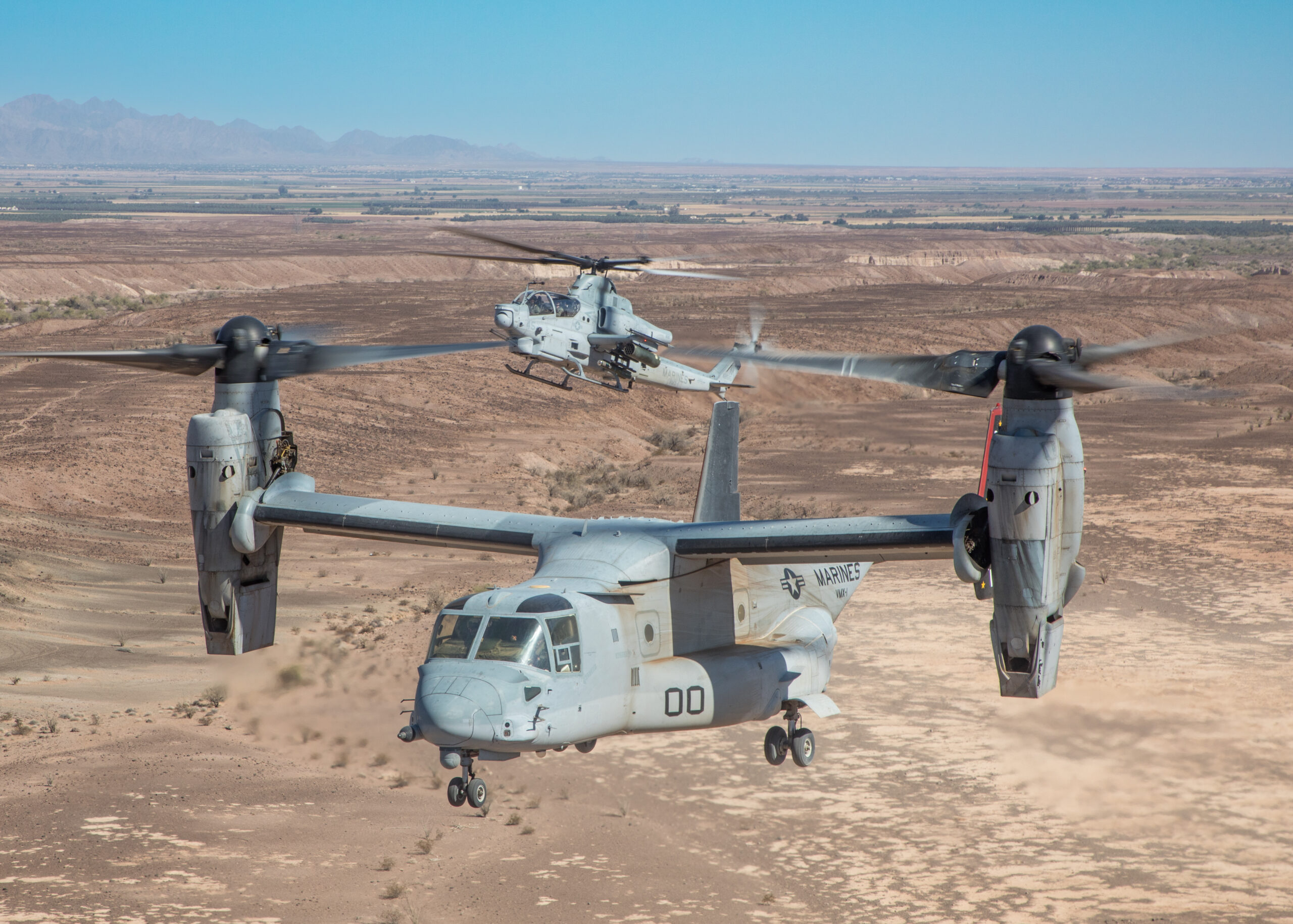
Running Marine aviation during the stand-up of VMX-1 was Lt. Gen. Jon “Dog” Davis who served as the Deputy Commandant for Aviation (DCA) from 2014 to 2017. Davis, having previously served as the commanding officer of MAWTS-1, knew what was at stake with the new squadron. He told The War Zone:
“When we started MAWTS-1, we had three different wing training units that were all run a little differently so we consolidated them in 1978. Inside MAWTS-1 we had Aviation Development, Tactics and Evaluation Department and that became a big engine for change and innovation in the Marine Corps. When I saw what we were trying to do on paper with VMX-1, I saw a huge opportunity. With everything together next to MAWTS-1, we had operational test pilots that could help with some of the work, and the synergy, with both together, became such an important move because the MAWTS pilots could see the tactics being generated by the VMX pilots. We had to have the right leadership with people that had experience in Advanced Development and Tactics Evaluation.”
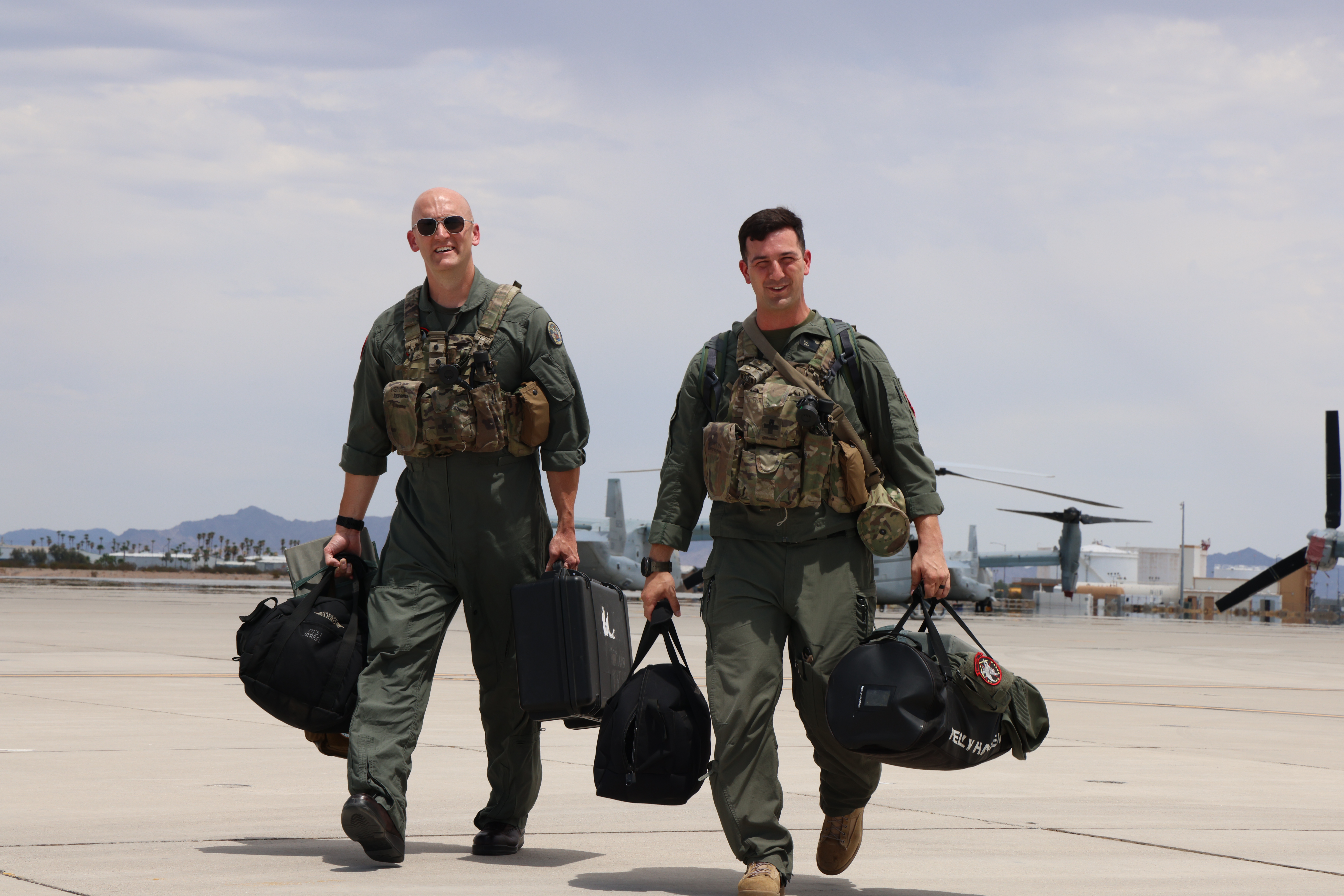
“We picked Colonel Pete McArdle as the first CO [commanding officer] because we told the board we needed the best guy in the Marine Corps. From the maintenance side, from the operations side, to the responsibility of the operational test, it was amazingly important to the Marine Corps to get this right.”
“In the Marines, we do things differently than the other services and so we have unique test requirements. We are flying the F-35 very differently than the Navy or the Air Force. Part of that is because of how closely we operate with the grunts. We operate as part of the Marine Air Ground Task Force [MAGTF] so we are going to use our equipment differently. We are trained and equipped to operate as an air-ground team.”
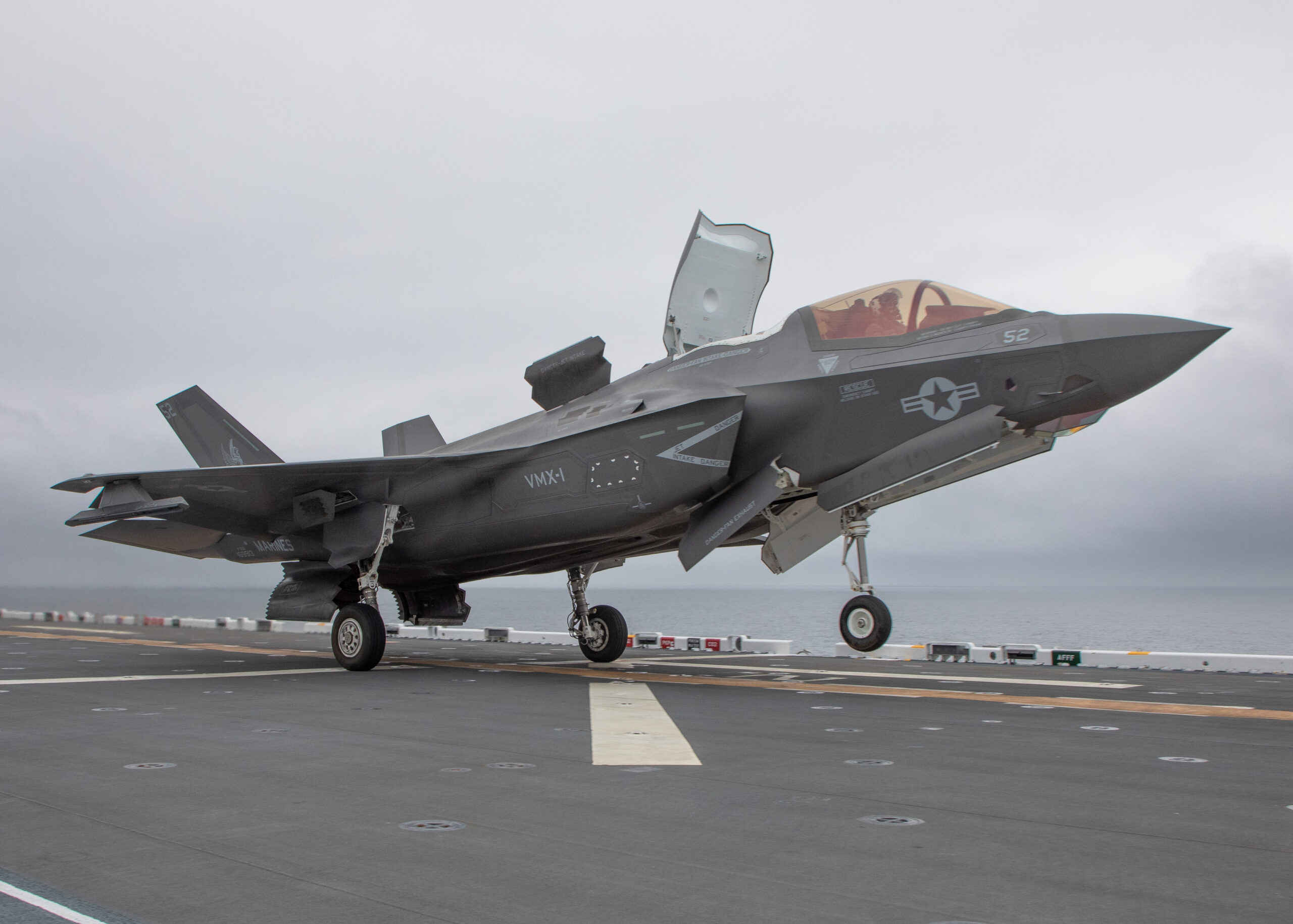
Operational Test and Evaluation is a Title 10 requirement that every single Department of Defense program goes through after it is done with Developmental Testing (DT). Title 10 provides the legal basis for the roles, missions and organization of each of the services. It is done to ensure that weapons and systems can meet the requirements set for each individual program. As VMX-1 does that, they also do the TTPs development. An example of this is the recent testing done for the Joint Air Ground Missile (JAGM) which is carried on the AH-1Z.
VMX-1 first did a lot of DT assistance to make sure the missile was safe to fire from the AH-1Z in different scenarios. After that was done, they did the operational test where they put the missile in an environment where Marines would be expected to employ it. The first testing was done in the Gulf of Mexico off Florida where JAGM was used to attack surface vessels. VMX-1 then moved the evaluation west to Yuma where they tested it with moving targets on the ground, including those that were obscured by smoke in order to test in environments that would be seen on the battlefield.
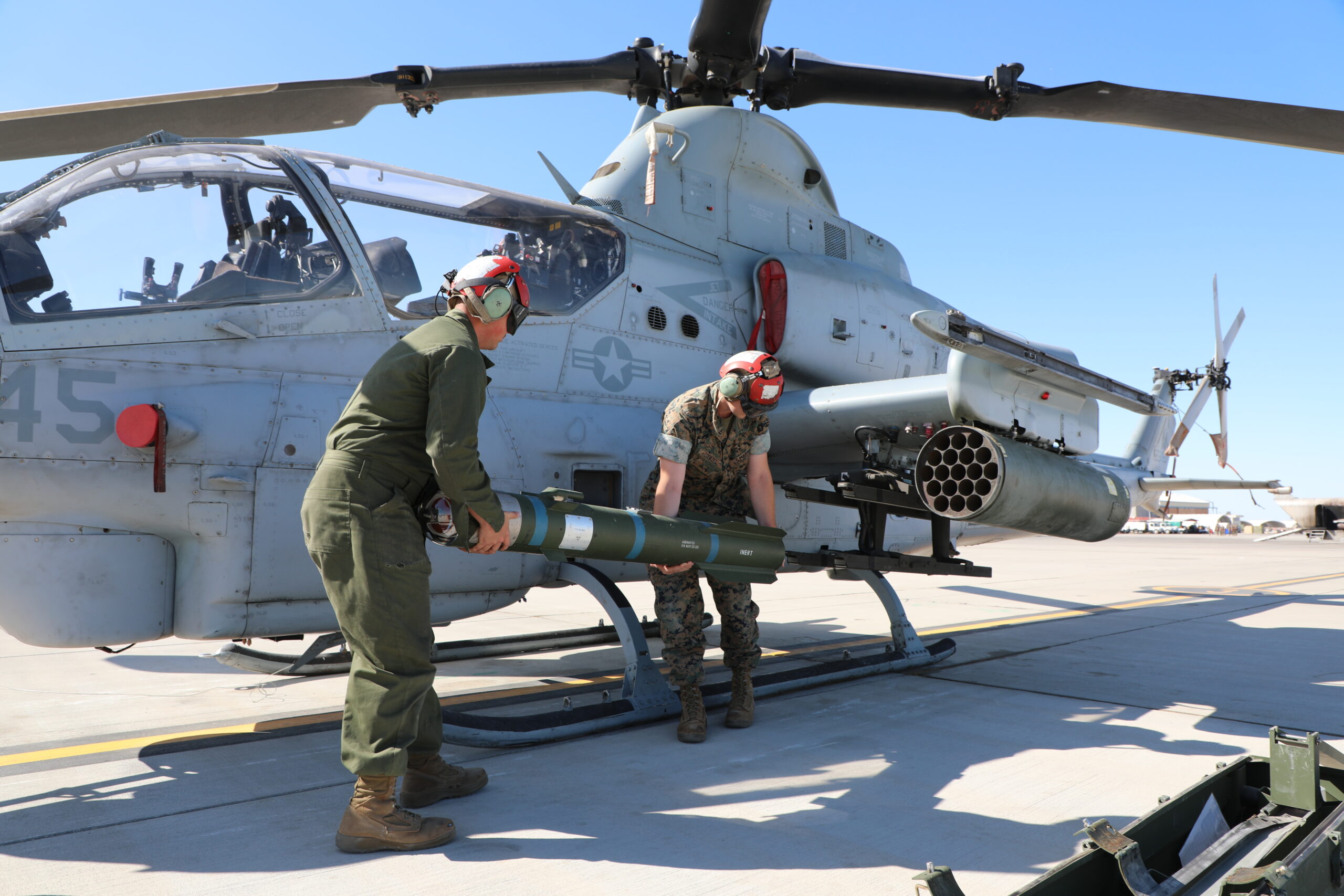
VMX-1 also provided lectures on JAGM to the Weapons Tactics Instructor (WTI) classes. They also had a squadron from MAG-39 (that was going to be the first to deploy with the new missile) have some of its pilots fly test missions with VMX-1 pilots. When the testing was complete, the 13th MEU sailed out of San Diego loaded with JAGMS, and the TTPs to employ them, at the ready.
Currently leading VMX-1 is Col. Brad “Spicoli” Hipp. Hipp is aware of the challenges Marine aviation faces in the Pacific, having had several deployments to the INDOPACOM region flying both the single-seat F/A-18C and the two-seat F/A-18D. Hipp is also a graduate of the Navy Fighter Weapons School (TOPGUN) and the WTI course. He returned to WTI as an instructor where he served as the Aviation Development, Tactics, and Evaluation Department’s Anti-Air Warfare Specialist before taking command of VMFA-115 where he deployed once again to the Western Pacific. Before taking command of the squadron, Hipp took his 3,100 hours of flight time in the Hornet and transitioned to the F-35.
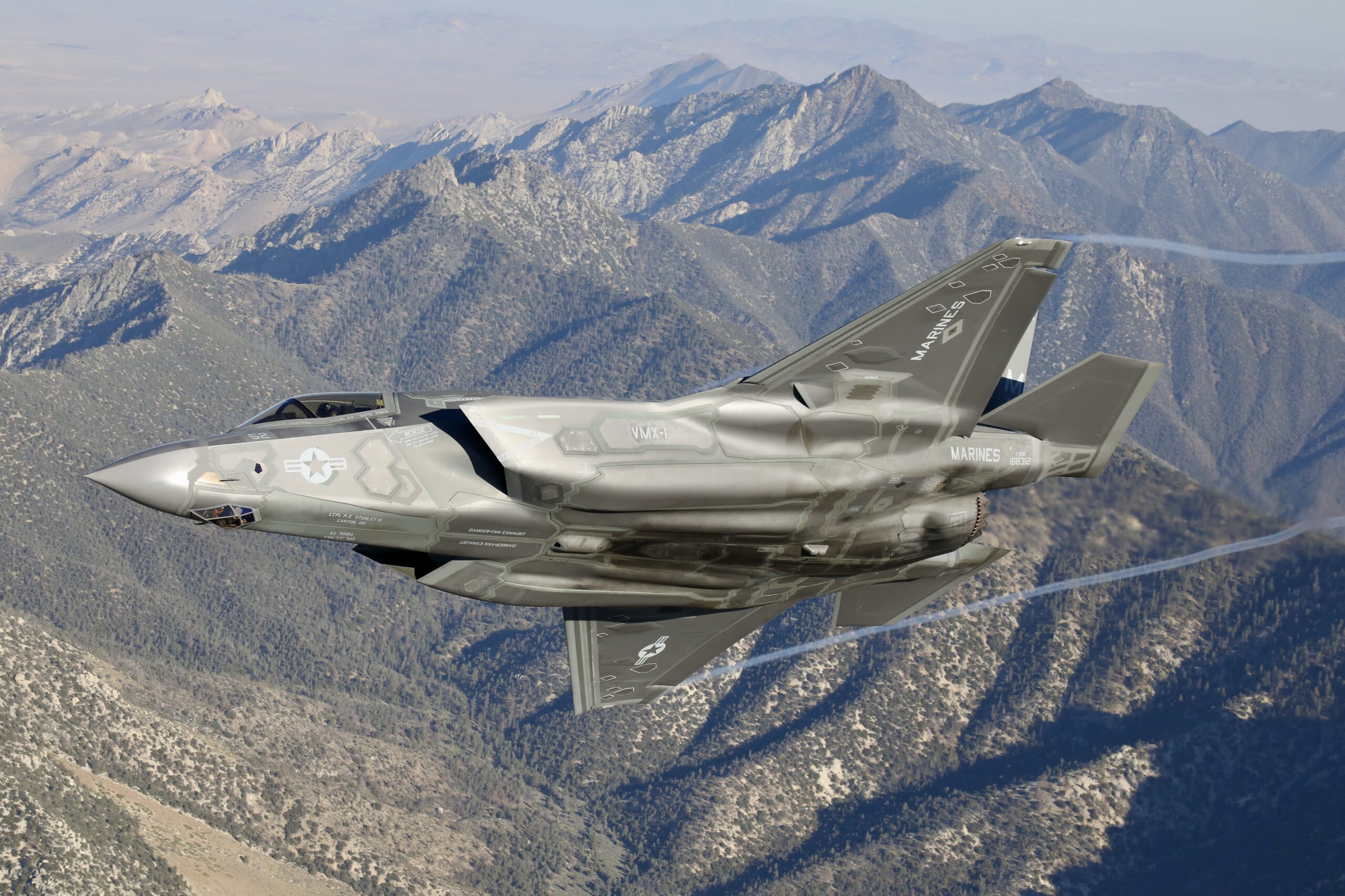
“We work directly for the Deputy Commandant for Aviation (DCA). We go to the DCA with our needs and our requirements. We also do all our official operational test reporting through Operational Test and Evaluation Force (OPTEVFOR) and that feeds back to the Director Operational Test and Evaluation (DOT&E) to the oversight that Congress requires for the combat systems that we test here at VMX-1,” he said.
“At VMX-1 we don’t often go out looking to find solutions to problems and work with vendors. We are taking programs of record or programs that are sponsored by the Marine Corps Warfighting Lab (MCWL) or the Cunningham Group where they say ‘hey, we are going to invest money in this thing and we want you to go test this concept or idea.’ If we have pilots out here at the squadron that have an idea about something, we will liaise with MCWL or the Cunningham Group to push our ideas to those people. We don’t do acquisitions at VMX-1 so we can’t go out and acquire things or obligate things.”
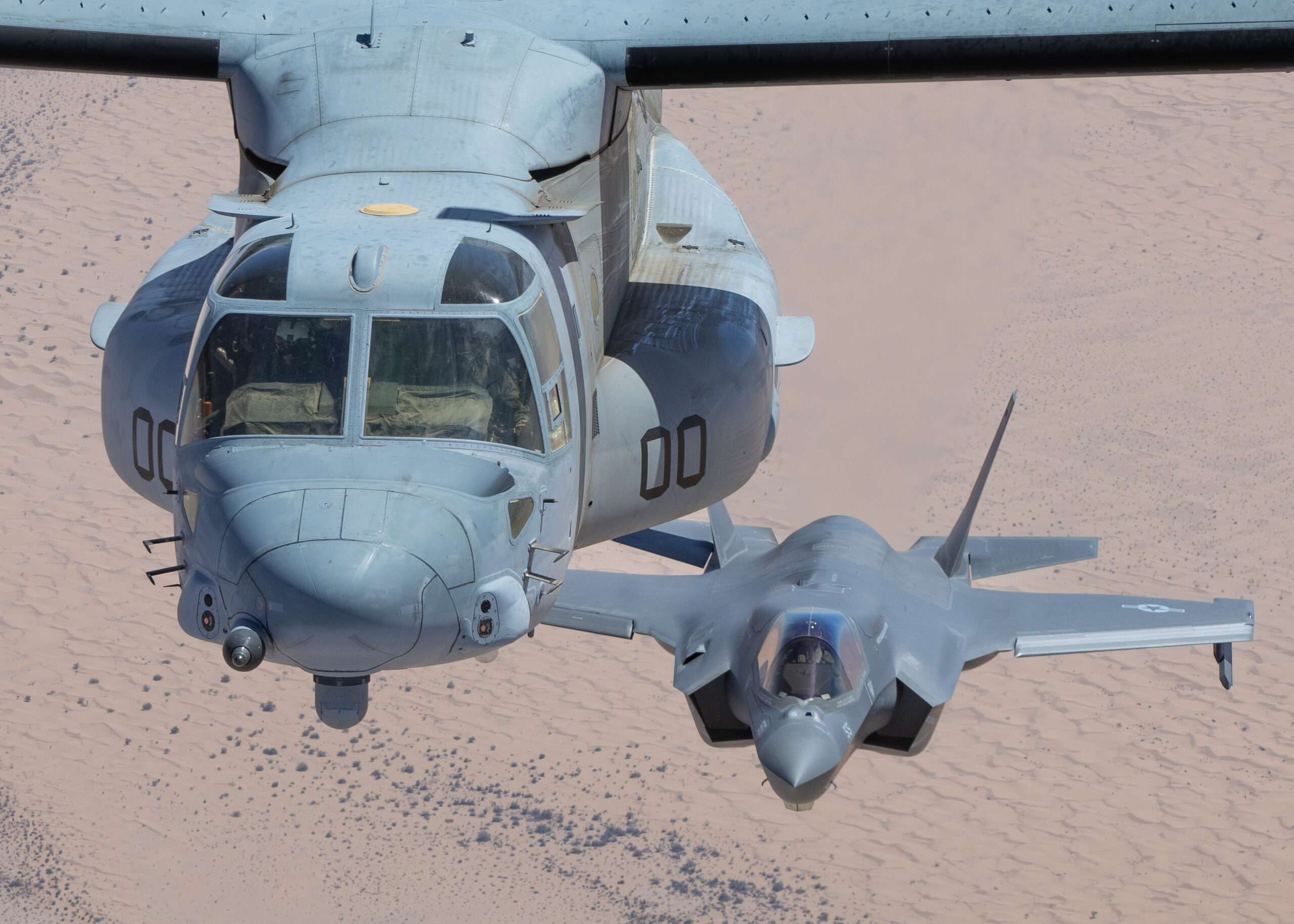
Marines are always known for doing more with less and VMX-1 is no different. For the first few years of their existence, they were severely understaffed for the mission that they performed, with many of their pilots executing a host of secondary collateral duties, but that is now changing rapidly.
“We recently had a huge change approved which added over 60 people to the unit. I would say that the unit has not been staffed appropriately to execute its mission, but that is changing with this plus up,” Hipp explained. “Everyone needs more people and the Marine Corps is a lean warfighting organization where we do more with less, and we know that, but I’ve got two Cobra pilots and two Huey pilots, as an example, and when you have three Cobras and three Hueys, you know, you can only fly one of them at a time, right? Because they’re both dual-piloted airplanes.”
“I think we’re getting healthier, and we’ll continue to get healthier. But certainly, more pilots give me more ability to fly and it gives me more time to conduct operational tests and evaluations and to write the test reports, and do the fleet engagement to get out there and let the fleet see VMX-1 and what we’re doing and spread some of the knowledge that we get here to those fleet aviators.”
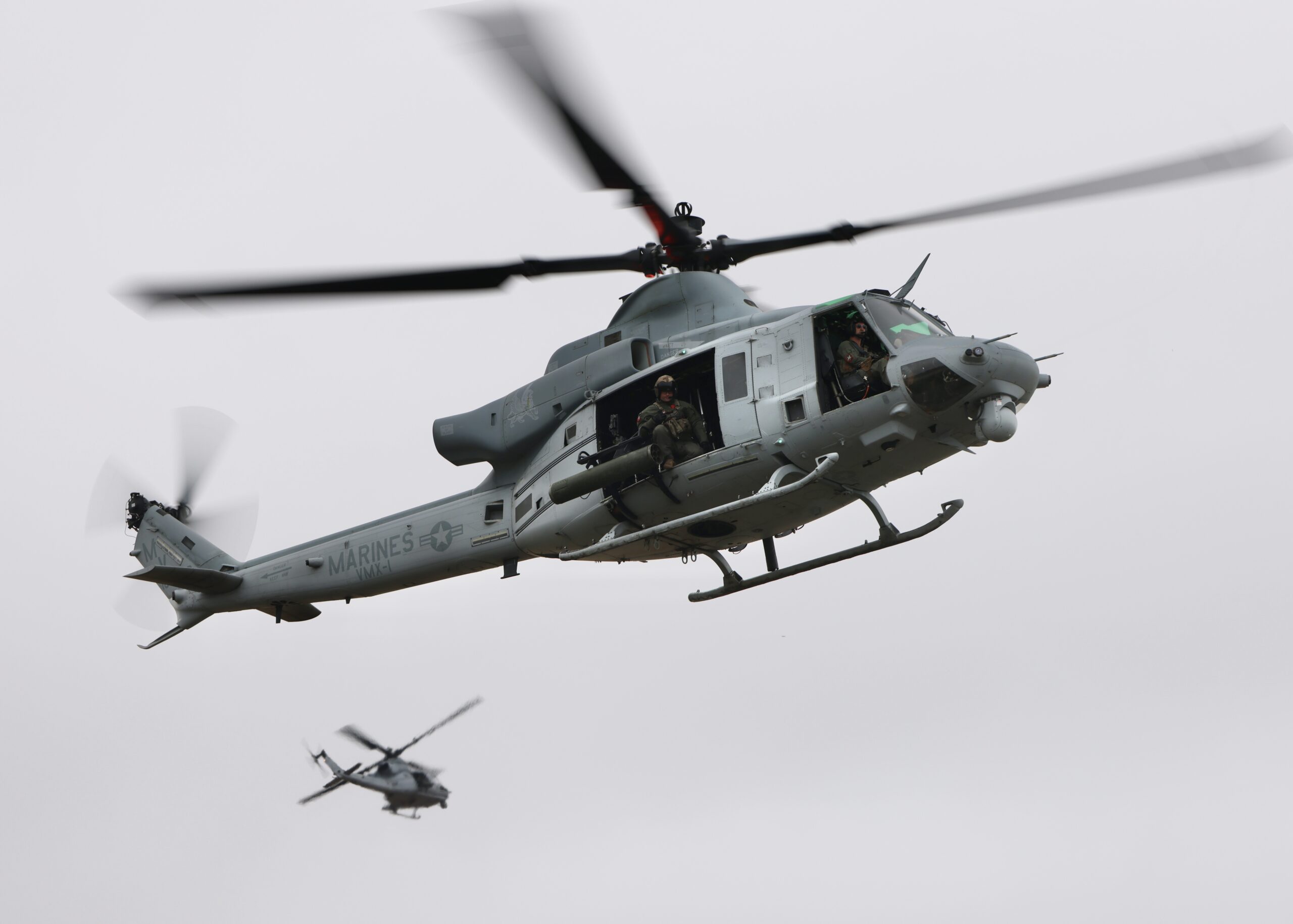
Currently, the squadron has about 330 people stationed in Yuma with about another 40 stationed at MCAS New River as part of the CH-53K King Stallion Detachment. While the majority are active-duty Marines, the squadron also has about 40 contractors that work on the Assault Support side of the house as well as performing data analysis and technical writing. They also have a civilian assistant operational test director who helps bridge the gap when active-duty people get reassigned.
Pilots assigned to the squadron know that they are in a unique position to have a positive effect on the future of Marine aviation and are carefully selected.
“In an ideal world, I would like to have all of my pilots to be TOPGUN or WTI graduates because those are the pilots who understand tactics and know how to teach and instruct which is very important to me. We also need people that understand risk mitigation,” Hipp said.

“We teach our instructors in all of our platforms at WTI, specifically, to mitigate risk and manage risk. I think that’s incredibly valuable when you’re looking at bringing out new systems, new software, [and] new weapons to have that type of experience. We are currently averaging about one WTI graduate per Type Model Series. Those guys can help me make sure that our tests are operationally relevant and threat-informed, but also help mitigate that risk.”
“I love having pilots with technical degrees. So if you’re an engineer or you’ve got some experience with technical writing, even you know, we’ve got a guy that’s a chemistry undergrad, that type of stuff is better, just from the analytical standpoint.”
“We’re pretty much all second-tour fleet pilots here. So pilots… have done at least one tour in the fleet and then they’re coming here. Pilots having somewhere between 500 and 1,000 hours, I think is, you know, what we need a guy to have, at least when he shows up, and then more is better… Some more deployments, more experience, more qualifications, and that way, when they’ve shown up trained, and [are] progressing, we continue to keep them competitive with more qualifications. When you are short-staffed and don’t have as many people as you like, then you need some true workhorses and we have been very fortunate to get those types of people at VMX-1.”
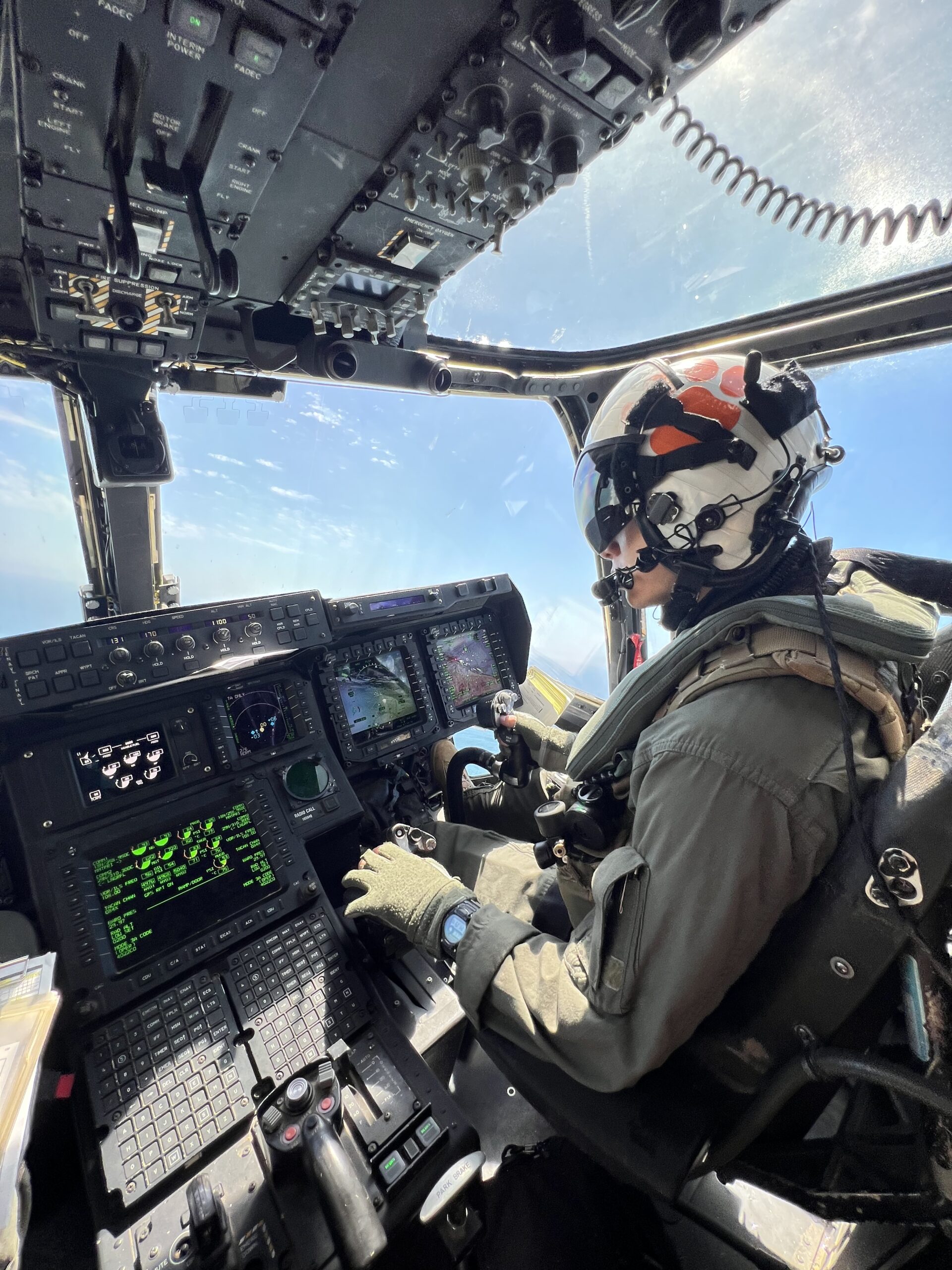
“There is so much to be gained sitting in close proximity to MAWTS-1. They have their ADT and E department and we look at ourselves as the flying arm of that. They are the innovators at MAWTS-1 and they push the envelope and can actually go out and acquire things to test during a WTI course. During the course, most of their aircraft are tied up teaching the students to be instructors, so we liaise with every class so we can help them with tactical demonstrations.”
“We also integrate heavily by flying in the major WTI events, especially with the F-35B. When the WTI events are not going on, we bring the MAWTS-1 pilots over to VMX-1. We bring a lot of their Cobra and Huey pilots over because that is where I am currently hurting the most. They have been able to progress some of our pilots with qualifications which is a really nice piece. It also gives their pilots a sneak peek of what is coming down the line since we are usually flying a software load or weapon system that they haven’t seen yet. They then can go back and talk to the fleet pilots and tell them what they are seeing coming down the line.”
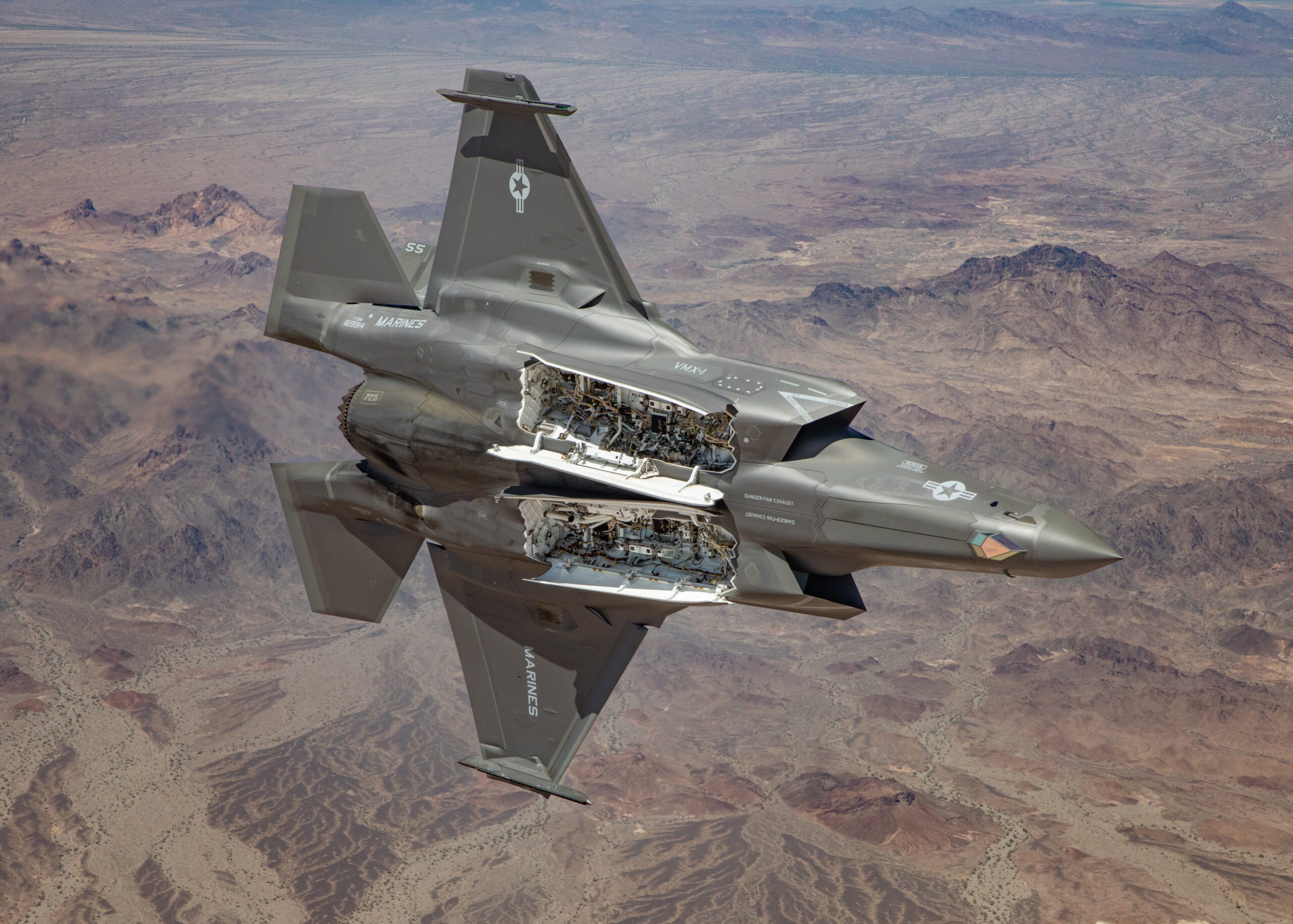
Sullivan added about WTI, “Folks often say, ‘hey let’s test this thing during WTI’ but often that is the wrong move. Innovation is a weird thing and people don’t like to see their ‘thing’ called ugly or their system fail. In actuality, I want to stress that system as much as I can in an operational[ly] realistic environment and I want it to fail because I want to make sure we are putting it through its paces. If it does fail, I want to be able to fix it with an engineering team that might be here so we can say, ‘hey this failed and didn’t work and we are going to test it again tomorrow.’ If it fails again, we make a fix until we make sure it works because, in the end, I need it to fail at VMX so that when we say it works, I can put my hand on my heart and know when that weapon system goes down range, it won’t fail for the fleet.”
“We will have a weapon system that can kick the enemy’s ass when we need it to because VMX-1 made sure the weapon system was ready for prime time. That is really what our charter is here, and that is the Title 10 requirement. Making sure the weapon system is ready for combat.”
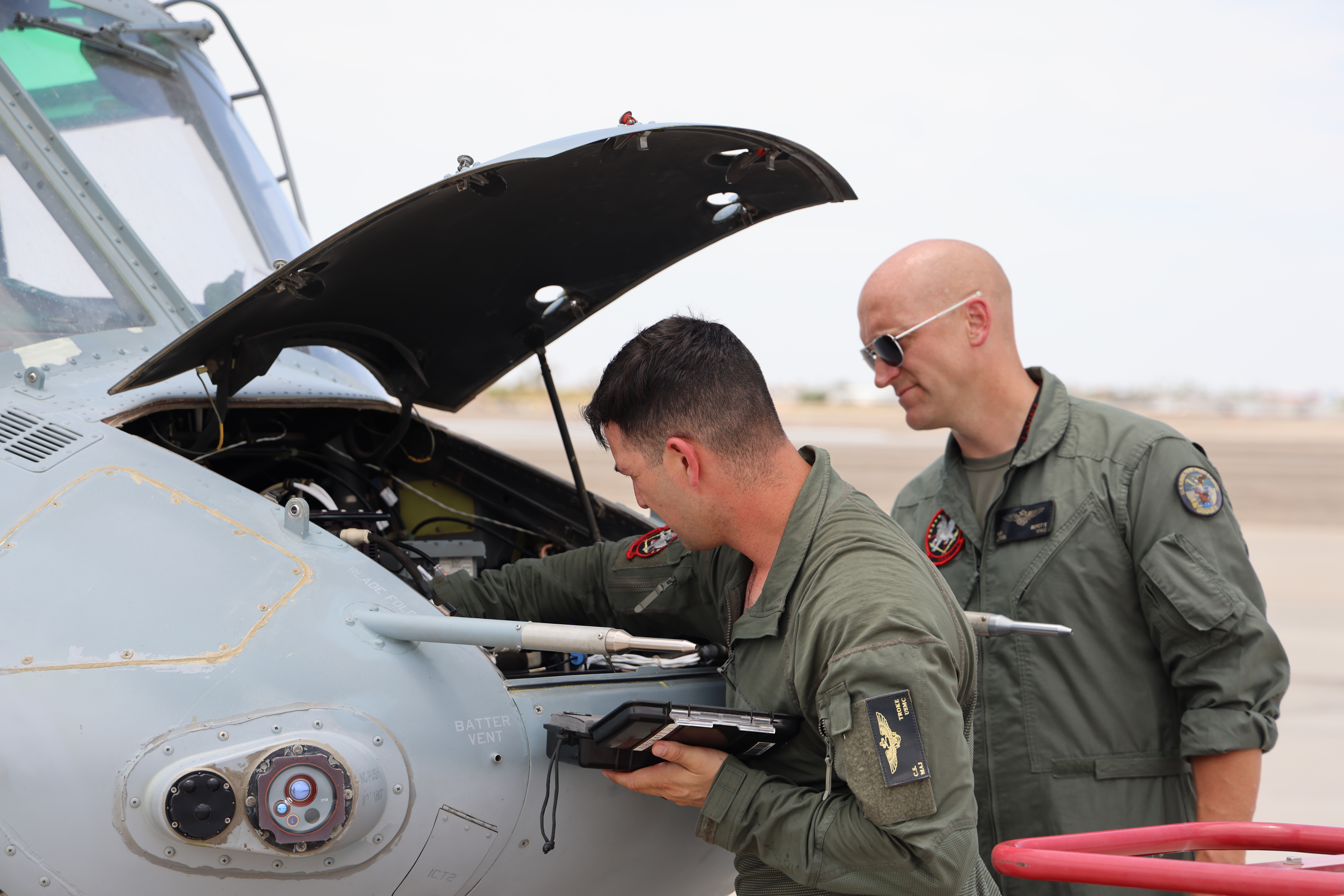
Another great advantage of the co-location of VMX-1 and MAWTs-1 is the ability for VMX-1 pilots to attend the coveted WTI course as students while completing their tour at VMX-1. Hipp explained:
“We have been fortunate to get some of our pilots through the last few WTI courses while I have been in command. We pushed an F-35 student through and in the last class we were able to put both a Cobra student and an Osprey student through. Getting a pilot to go through WTI or TOPGUN is really challenging. It is based on a lot of things like when a pilot shows up to the squadron or who might be ahead of you. So being able to tell pilots that if you come to VMX-1 and maybe the timing didn’t work out for you because of deployments or something else, maybe we can get you through WTI and then serve at VMX-1 for a few years and they go back to the fleet even more qualified and ready to contribute.”
Having immediate access to so many different types of aircraft in the Marine Corps’ inventory puts VMX-1 in the position to be able to conduct unique tests on an almost daily basis. Operating out of Yuma also gives them nearby access to great training ranges including the Barry Goldwater Range and the Yuma Proving Ground.
“There are very few places in the Marine Corps where a guy can sign one flight schedule with all the different airplanes of Marine aviation. If you want to go out and do something with MV-22s, Cobras and F-35, that’s the stroke of a pen for me on a Wednesday afternoon and we do it Thursday. I think that’s one of the very unique things about this unit,” Hipp explained.
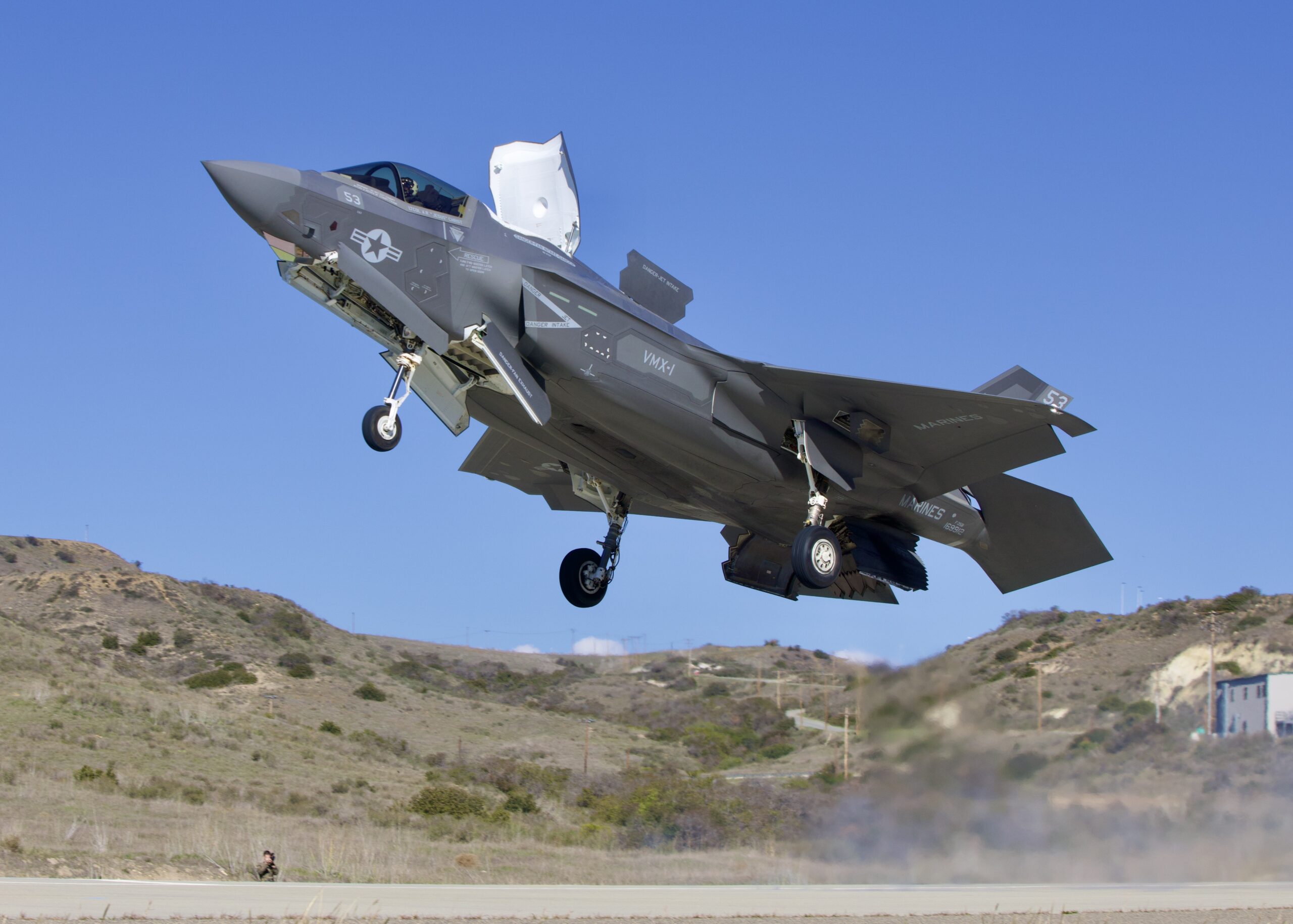
“One recent example of that is the recent Link-16 testing done on the AH-1Z and UH-1Y. Before the helicopter pilots were even flying with Link-16, some of them were able to hook up with F-35 pilots within the squadron so they could see firsthand in the F-35 simulator how Link-16 was integrated into the F-35 to give them a precursor of what to expect and how they might employ the tactical data link. They were then able to fly Close Air Support (CAS)and Forward Air Controller Airborne (FAC-A) missions out at the range with F-35s.”
Recently, VMX-1 was conducting CAS test points for the new software in the F-35B known as 30R08.04. The software had yet to make it to the fleet so the pilots of VMX-1 were testing it in an operational environment to work out any kinks they might encounter.
“Marines always do the CAS test points, right? Because who else is going to do that? We’re certainly not going to give that to the Navy or the Air Force,” Hipp said with a smile.
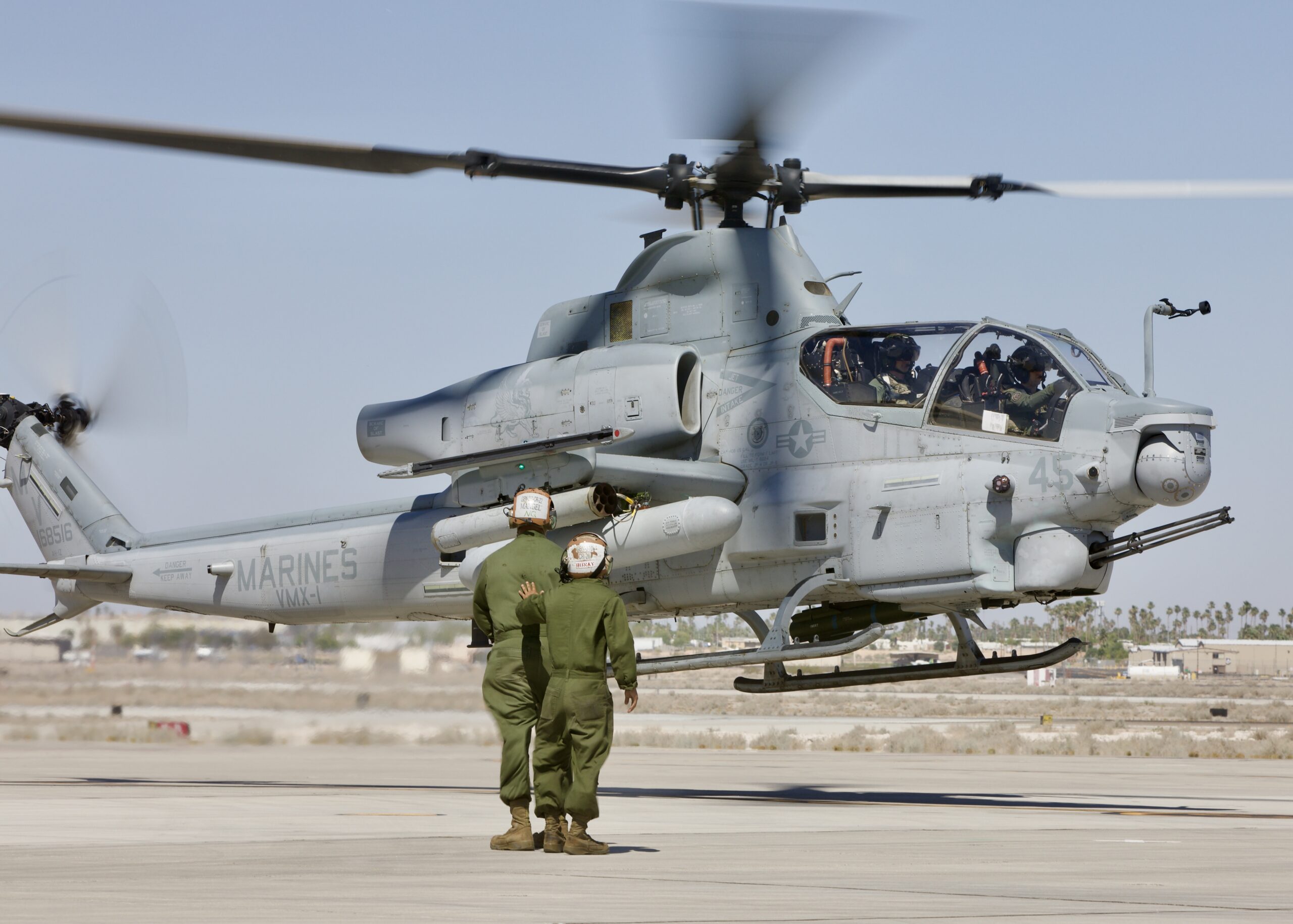
In total, the squadron dropped eight GBU-54 Laser JDAMs and seven GBU-38 JDAMs during the testing which opened up the envelope for those weapons when employed by an F-35. During the testing VMX-1 leveraged their AH-1Zs and UH-1Ys, having them serve as FAC(A)s to control all of the CAS test points.
Hipp added, “It was a great opportunity to be able to sign a flight schedule that included our Assault Support assets to generate F-35 tests. On the other side, we leveraged the F-35 to support AH-1/UH-1 Digital Interoperability test. During the testing, VMX-1 brought in MAWTS-1 instructor pilots and some fleet pilots to fly with them.”
While the bulk of testing for VMX-1 is done over Southern Arizona, they are constantly waving the flag at training events around the United States including at NAS Point Mugu in California as well as Red Flag in Alaska. VMX-1 leaders have been tasked with operating with all of the services so they can better explain what they do and what they bring to the table.
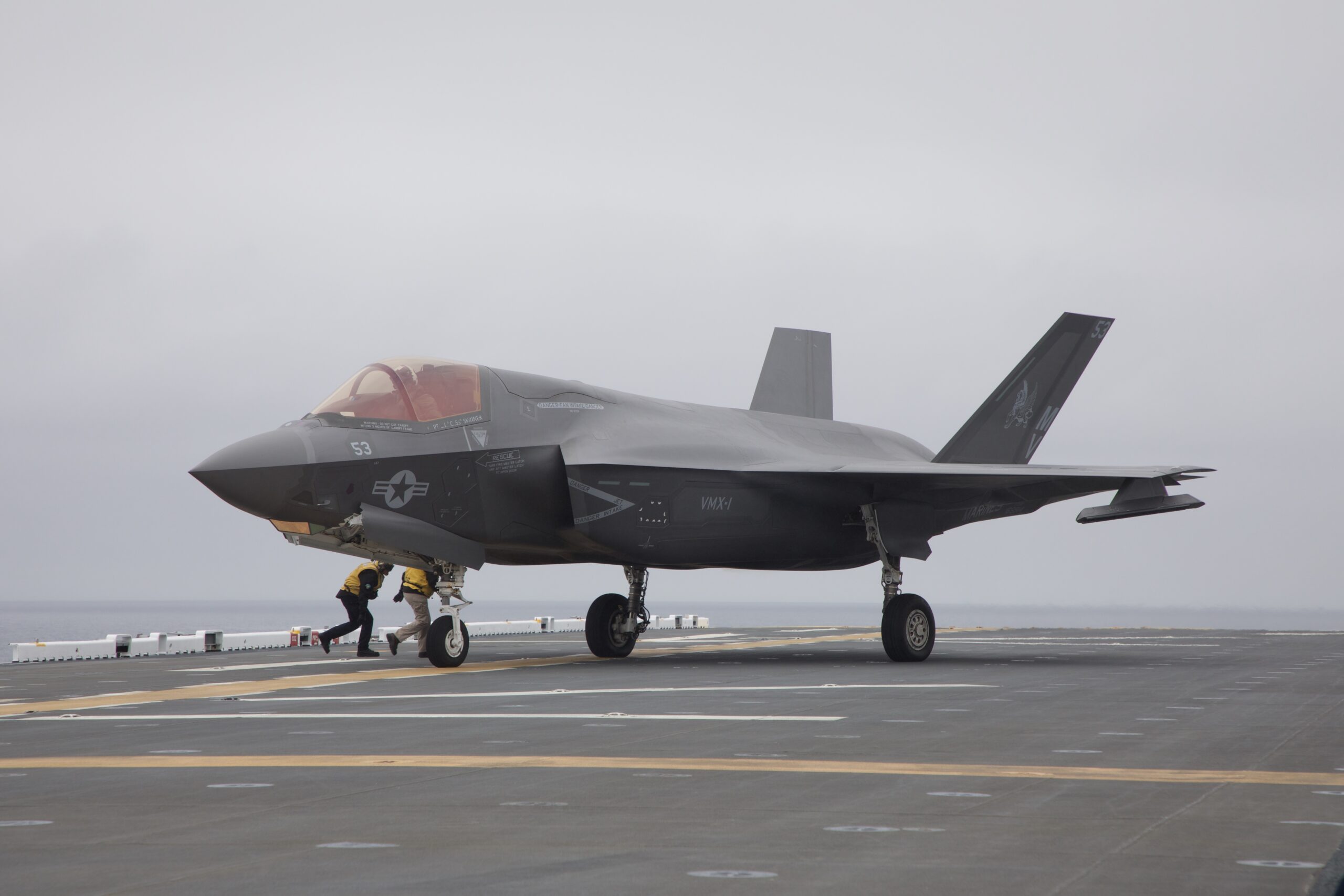
“We are constantly reaching for opportunities to work with our joint partners. With the F-35, it is really easy because we share a common tactics manual, and so Red Flag Alaska provided us a great opportunity to fly not only with the USAF and Navy but we also got to fly with the British and the Australians. We were able to share information and to see what strengths they each were bringing to the table. It was also interesting to see where their focuses were on both tactics and weapons and things of that nature.”
“While we were up in Alaska we made a lot of headway with beyond line of sight waveform for F-35 data. The gains and success[es] we had with that system are going to drive the joint force to do something similar.”
Although the Marines will continue to fly both the F/A-18 Hornet and AV-8B Harrier for the next few years, VMX-1 has never had any of those aircraft in its inventory, instead letting VX-9 conduct the operational testing needed as both aircraft are near retirement. There are ‘legacy’ Hornets still serving in the USMC including a mix of F/A-18A++, F/A-18C, and F/A-18D variants, with many being upgraded with new AESA radars and electronic warfare self-protection enhancements. The capabilities that the Hornet brings to the fight are not lost at VMX-1. Instead, the squadron works very regularly with the legacy Hornet squadrons as they integrate the 4th generation fighters with the 5th generation F-35.
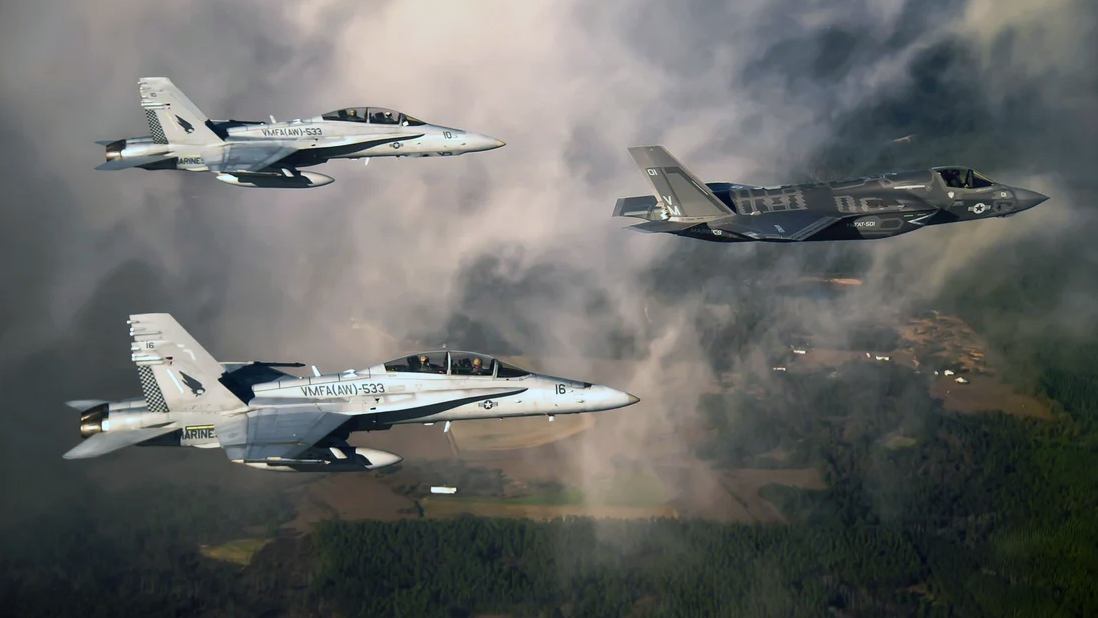
With over 3,000 hours in the F/A-18, Hipp knows the value that the older aircraft bring to any future conflict, especially in terms of weapons.
“The thing that is really important to note is that both platforms have a lot of game and capability that they bring to the fight. They can bring things that the F-35 does not, especially when it comes to long-range weapons. They have a more mature weapons suite, and they can carry more air-to-air weapons and some of the larger standoff weapons,” he noted.
“When you look to maximize diversity and firepower and numbers, 4th generation fighters bring a lot. They also make 5th generation fighters more lethal because I have been a big fan of integrating 4th and 5th generation assets for a long time. When you are fighting a pure 4th gen force, that is one challenge. When you fight a pure 5th gen force, that’s a different challenge. But pool them together and you have to deal with the capabilities that both bring to the fight, then that is as challenging a scenario for the enemy as any.”
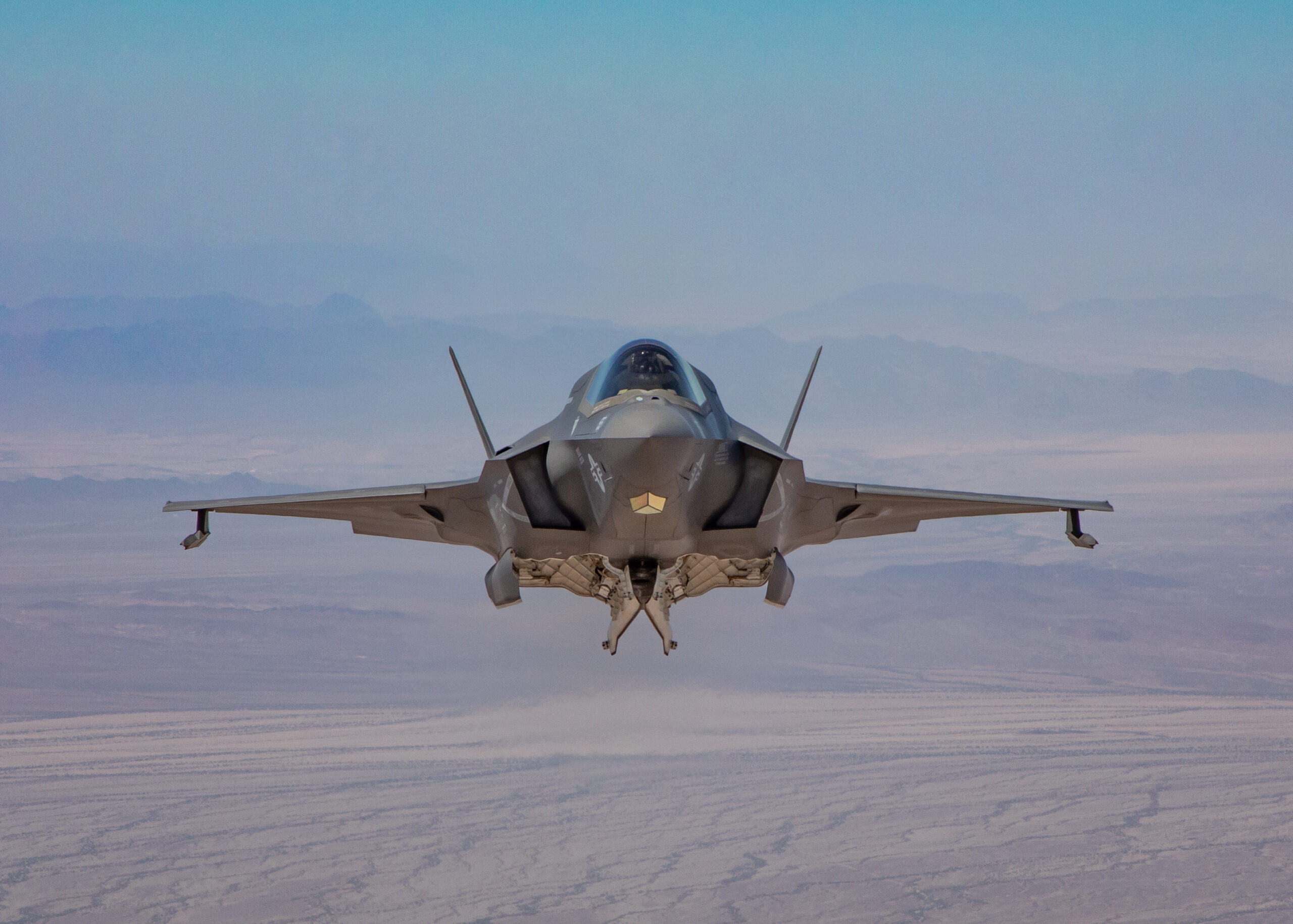
“We will continue to leverage both the Hornet and Harrier for that reason. We will see that integration at most of the exercises that we go to, especially with the Hornet and its ability to carry the Harpoon missile, which we don’t have right now in the F-35.”
“We recently did an exercise Northern Edge where we worked with F-16s, F-15s, and even A-10s. Continuing to bring those types of assets into Operational Test is important. Twice a year we have a great opportunity to integrate with the older platforms during WTI. We also get across the hill to MAG-11 at Miramar quite often to work with the F/A-18s.”
One other Marine aircraft that VMX-1 does not have on its flightline is the KC-130J, partly because they look to leverage what the other services do. Traditionally operational tests on the KC-130J have been done by the U.S. Air Force and the U.S. Navy (VX-20) but VMX-1 has conducted some testing and recently begun working with MAG-41 which is the reserve MAG that has J models that operate out of Fort Worth, Texas. They came up with a construct where if there was something that needed to be tested, they could potentially team up to get it done.

Regarding the F-35, all of the services that fly it have different priorities regarding its use. For the Marines, there is a heavy focus on the F-35 and Expeditionary Advanced Base Operations (EABO). According to the 2019 Marine Aviation Plan, EABO is described as follows:
EABO is a future naval operational concept that mitigates peer competitors’ anti-access / area denial capability by creating a more survivable, resilient, and persistent forward- postured force. The EABO concept is designed to re-establish the force credibility required to have a deterrent effect. Using key maritime terrain in the vicinity of close and confined seas, EABO provides decision-makers with sea denial options that are coercive, but not escalatory.
Nested within other naval and joint concepts such as Joint Access and Maneuver in the Global Commons (JAM-GC) and Littoral Operations in a Contested Environment (LOCE), EABO sustains and advances the inside force’s ability to leverage the lethality of the outside force.
The EABO concept is comprised of low-signature, mobile, relatively low-cost capabilities operating in expeditionary and temporary locations. These capabilities provide the joint force commander with the ability to target and strike the adversary while also making up the backbone of an active maritime defense-in-depth..
EABO provides the Joint Force Maritime Component Commander (JFMCC) with sea denial options by using advanced bases to position and operate joint aircraft. All six functions of Marine aviation can be executed through the use of mobile and expeditionary EABs. By using all available basing options, Marine aviation can expand the reach and lethality of the joint force commander.
With the challenges being faced in the Pacific and not having a standoff weapon, VMX-1 is currently heavily focused on Small Diameter Bomb-II testing, as well. The new weapon will give Marine F-35Bs an internal precision-strike standoff weapon that can defeat moving and fixed targets in adverse weather conditions.
Expanding on what’s on the horizon, Hipp said:
“If you look at the battlespace recently, it really has changed a lot. This is not our traditional fight. Managing your signature will be important across the entire spectrum. The ability to grab snippets and collect on the enemy from any platform at any time will be really important. It’s not just the F-35, we are looking at our MV-22s being able to contribute to the picture as well as the MQ-9. That is why we are buying that platform. The pods that the MQ-9 brings to the table, as well as the networking capability that it is going to have. We are also bringing in the Cobra and Huey because if they see something then they should be able to put it out so everyone can become more lethal because one platform is not going to be able to do everything by itself. They are going to contribute one piece and a contribution will have to come from something else, whether it be assault support or space-based or F-35. Then that whole picture needs to be networked. We are thinking a lot about that at VMX-1 and we want to be the testbed for that because we have all of the platforms.”
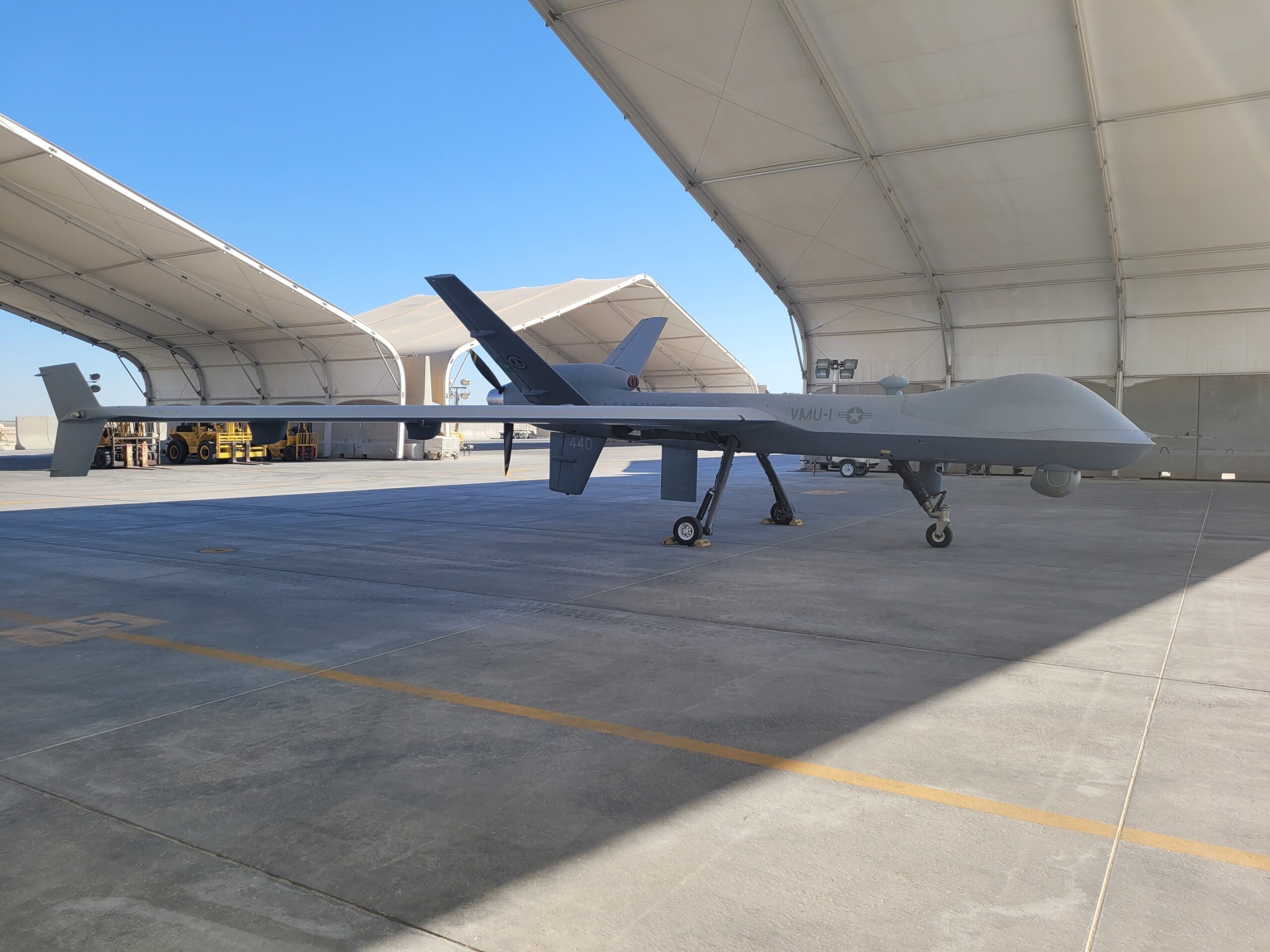
Besides the huge plus-up in Marines that VMX-1 is in the process of receiving, they are also getting a big upgrade in infrastructure with the addition of two new hangars at MCAS Yuma. One will be dedicated to assault support while the other will be dedicated to the six F-35Bs that they have and will include the two MQ-9s that will arrive next year.
The new F-35 facility will be a jointly accredited facility that will have the ability to process Top Secret and SCI-level information. The goal of the facility is to be an integrated testing facility so all the different platforms and sensors at VMX-1 can quickly gather their data in a secure environment. Doing the collation of data in their own command and control center will help them quickly prove some of the concepts that are needed.
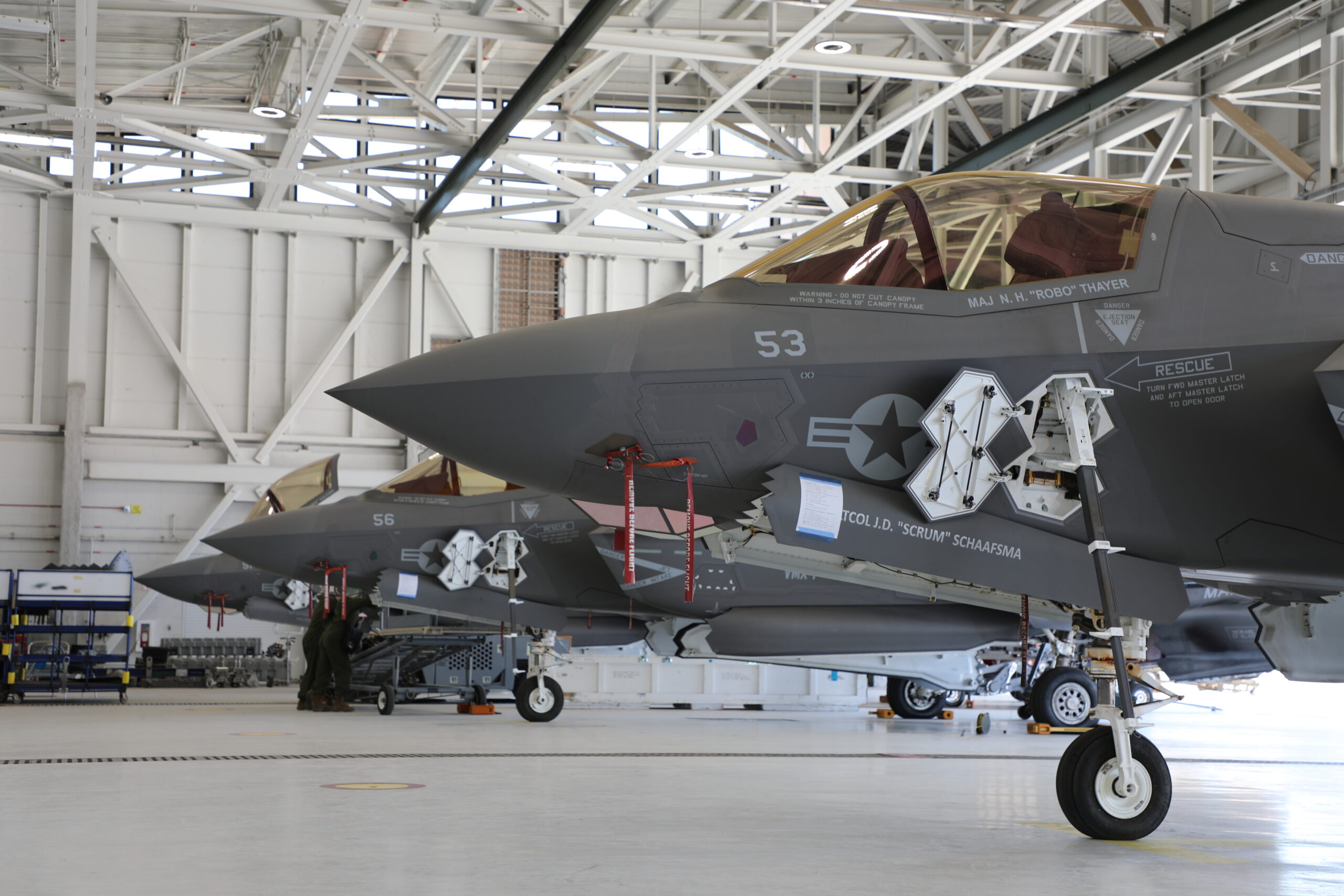
VMX-1s Operational Test Director Lt. Col. Guyette explained, “It’s an integrated facility where we can bring a lot of different data streams in and out. As part of the Marine Corps effort to do Marine Targeting Cell Expeditionary (MTC-X) and Joint All Domain Command and Control (JADC2), the Marine Corps interpretation or contribution to that effort is primarily supported by the MTC-X construct.”
“Essentially, everything is a sensor. All that information is fused at that echelon level and then piped backwards, so that the common operating picture is known by all. And then there’s also a forward pipe that pushes all that situational awareness to the ‘tactical edge.’ Some of it’s done back in the rear, but managing all those tracks and then providing the right situational awareness to the right shooter at the right time using the right system is kind of key to that. And so what that building down the street is going to allow us to do very shortly is to provide the Marine Corps and Marine Corps Warfighting Lab with a sandbox essentially.”

“The sandbox that we’re going to build is going to allow VMX-1, which already has all of the aircraft platforms, to integrate with our incoming Maritime Targeting Cell – Expeditionary hardware, software, and organization, including humans, to build a mini INDOPACOM in the Yuma training ranges. We want to see if the F-35 can connect to this satellite to provide this service to this asset or, ‘hey, when the H-1s and V-22s fly, their RF [radio frequency] signature reduction technique is this, let’s go test this out, and then simulate the control system on Okinawa’ from this new building to see if we can actually control that node, using this new capability. We can do that on a Tuesday and have a preliminary report out by Friday.”
In the coming months, the CH-53K squadron will move from MCAS New River to MCAS Yuma. It will also receive its first MQ-9. These moves will finally bring all of VMX-1s assets into one place creating a ‘one-stop shop’ for Marine Aviation Operational Testing.
Contact the editor: tyler@twz.com
